Historic Attractions of Ethiopia
Yeha
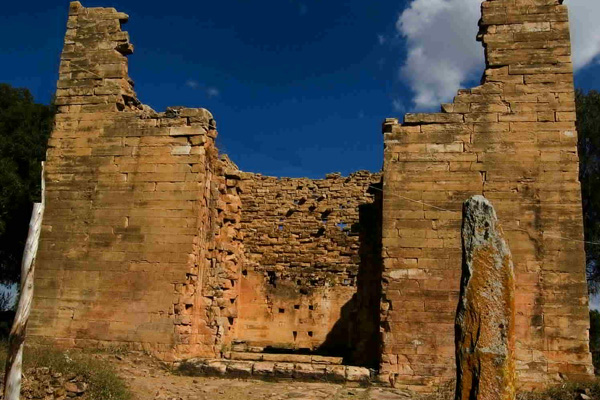 Yeha is located in the northern mountainous region of Tigray. It was once a great pre-Axumite civilization center and is believed to be Ethiopia’s first capital city. The first settlers of this area known to be the Sabian people, who were migrated from the southern Arabian peninsula mainly from the highlands of Yemen to this region around the first milinium and started to intermingle with local indigenous African people” Agew tribe”.
Yeha is located in the northern mountainous region of Tigray. It was once a great pre-Axumite civilization center and is believed to be Ethiopia’s first capital city. The first settlers of this area known to be the Sabian people, who were migrated from the southern Arabian peninsula mainly from the highlands of Yemen to this region around the first milinium and started to intermingle with local indigenous African people” Agew tribe”.
On the other hand, many historians rejected this point of view and they insist that the Ethiopian, who were lived in the present day of Ethiopian highland, namely the Abyssinian ruled and dominated over the Arabian gulf until the rise of the new Islamic religion to the region. The temple of yeha, with one side of its walls in ruin, is otherwise still intact shows its technical advancement. There is no trace of mortar being used to build this temple, which its inside wall was believed to be also paved with Gold.
It was first time uncovered yeha city at the beginning of 20th century around its courtyard. The archeological excavation made in 1909,1947 and 1973 respectively reveal that this beautiful temple was destroyed by fire. Treasures such as Gold ring, golden lions, stone carved animals like the waliya ibex (one of Ethiopian endemic mammal), pottery works and others were uncovered. some of these findings are displayed at national museum in Addis Ababa.
Axum
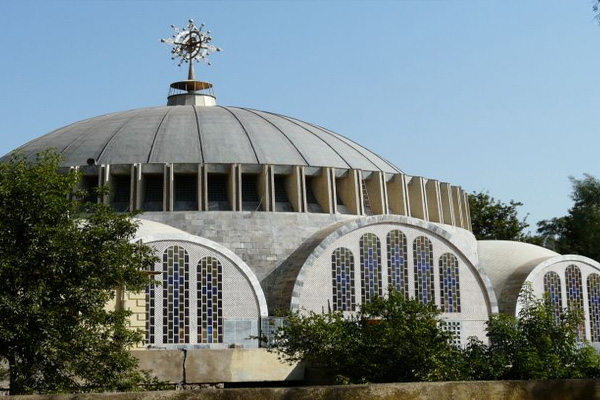
Axum (Aksum) is an ancient city in northern Ethiopia, in the Tigray region. It was the capital of the Aksumite Kingdom, which flourished roughly between the 1st century CE and the 7th century CE. The Aksumite Kingdom was one of the great civilizations of the ancient world alongside Rome, Persia, and China and played a major role in trade between Africa, Arabia, and the Mediterranean. Axum was the political and religious center of the Aksumite Empire, which controlled territories in present-day Ethiopia, Eritrea, Djibouti, Sudan, and parts of Yemen.
It was strategically located along the Red Sea trade routes, exporting gold, ivory, and frankincense, and importing silk, spices, and wine from distant lands.
Gigantic granite obelisks, some over 30 meters tall, carved from a single stone block. These were royal grave markers and symbols of power. The Great Stele (likely fallen during construction) was one of the tallest monoliths ever attempted in the ancient world
Around 330 CE, under King Ezana, Aksum became one of the first states in the world to officially adopt Christianity, even before many European nations. According to Ethiopian Orthodox tradition, the Ark of the Covenant is kept in the church of St. Mary Zion, after the son of King Solomon Minilik I brought from the Temple of Israel circa 950 BC. This church was originally built by King Ezana and rebuilt over a centuries. This place is believed to be the holies place for most Ethiopian and celebrate annually a big congregation in this church.
The Aksumites used Ge’ez, one of the world’s oldest written languages still used in Ethiopian church liturgy today. It was the first African empire to mint its own coins, often with inscriptions in Greek and Ge’ez, showing its international connections.
Underground tombs of kings such as Kaleb and Gebre Meskel, showing advanced stone-cutting skills. Including the Dungur Palace (often called the “Palace of the Queen of Sheba” — though historians debate).A Known for massive stonework without mortar, intricate carvings, and monumental stelae.
By the 7th century CE, Axum’s power declined due to shifting trade routes after the rise of Islamic states controlling the Red Sea. Environmental changes reducing agricultural productivity and political fragmentation in the Ethiopian highlands was the main and immediate factor for the declining of the Axumite kingdom. Axum is a UNESCO World Heritage Site (since 1980) due to its archaeological importance and unique monuments.
Tigray Rock-Hewn Churches
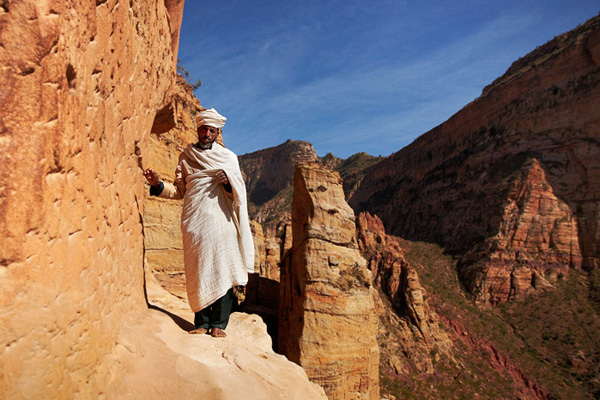
The rock-hewn churches of Tigray, located mainly in the Gheralta Mountains and surrounding highlands in northern Ethiopia, are some of the country’s most remarkable religious and historical monuments. Unlike the famous churches of Lalibela (which are monolithic and free-standing), many of Tigray’s churches are semi-monolithic or built into cliffs, often accessible only by steep climbs or narrow paths. Most were carved between the 4th and 15th centuries, with some possibly even earlier, dating back to the Axumite period. Built by early Ethiopian Christians, they served as places of worship, monastic retreat, and pilgrimage.
Their architectural style shows a mix of Axumite, Byzantine, and local Ethiopian styles. Many churches are literally cut into sheer rock faces or mountain peaks includes carved wooden beams, cross-shaped windows, and decorative arches. Walls and ceilings often have colorful religious murals depicting biblical scenes, saints, and angels. Some can only be reached by climbing vertical cliff faces or walking narrow ledges, adding to their mystique.
- Abuna Yemata Guh– Perched high on a cliff, accessed by climbing a vertical rock face; known for its vivid frescoes.
- Maryam Korkor– Large, open interior with massive pillars and painted walls.
- Daniel Korkor– Close to Maryam Korkor; offers breathtaking views over the Gheralta plateau.
- Debre Maryam Korkor– Notable for its size and rock-carved architectural details.
Petros and Paulos Church – Famous for its carved cross-shaped decorations
Lalibela
Lalibela was built after Four hundrd years of the dawn fall of the Axumite empire and shifted its political and religios center to Roha, located in the isolated mountainous region of the former Lasta province. Its former name called Roha until king Lalibela curved out the famous 11 rock hewn churches at the second half of 12th century. This wonderful rock hewn churches attributed to King Lalibela, who set out to construct in the 12th century ‘New Jerusalem’, after the Muslim conquests of the holly land and halted Christian pilgrimages to the region.
Many scholars suggested that it might be one of the reason to motivate king Lalibela to curve “second Jerusalem” at Roha in Africa. Many places and churches renamed after the holy land in Jerusalem such as: mount Sinai, Golgotha, river Jordan and the symbolic tomb of Adam and christ.
Due to its unique monolithic and semi monolithic rock hewn churches, Lalibela is one of wonder and top tourist destination in the world.Tourists from all part of the world are travelling to there to visit and admire the unique feature of this churches. Among them, Alewarez, a portugies priest and explorer,who visited this churches in the sixtenth century and described them as a super human achievement.
Gondar
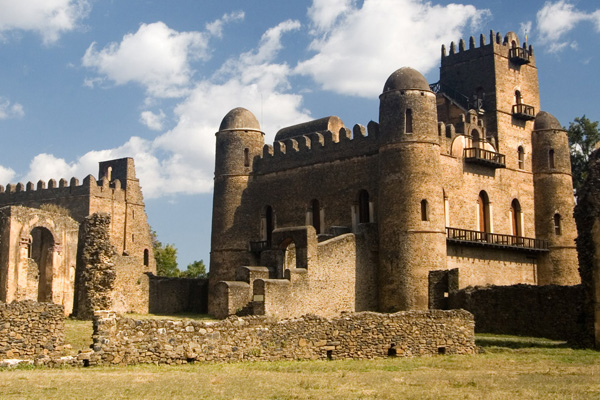 Gondar was the third permanent capital city in the medival history of Ethiopia after Axum and Lalibela.
Gondar was the third permanent capital city in the medival history of Ethiopia after Axum and Lalibela.
About more than two hundred years after the dawn fall of Zagwe dynasty until the establishment of Gondar as a permanent residence, the Ethiopian Christian kings had no a fixed place for settlement. They had mobile royal court to administer over the large territories and to escape from the restless war between the lowland Muslim sultanates.
This long tradition came to an end when Emperor Fasiledes declare, Gondar as his permanent capital city in 1636. Gondar grew faster and become an important political and commercial center to attract the long distance Arabian traders.
Many medieval Ethiopian kings ruled out of it and built their own beautiful castles, churches and monasteries. Some of the prominent Gondarian kings are: Fasildes, Yohanes Iyasu, David and Bekafa. Gondar became once a very powerful Christian kingdom and played a big role for the growth of Ethiopian art and literature until the end of nineteenth century, but when Emperor Teodros ll. came to power in 1855, he shifted its political center to Mekdela, which was a temporarly capital center before the establishment of Addis Ababa.
Lake Tana and Its Monasteries
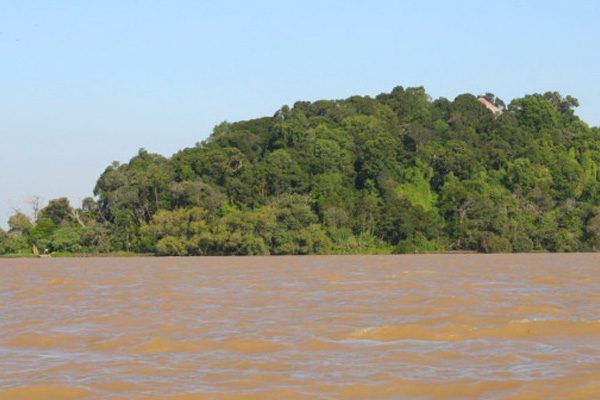 Lake Tana is Ethiopia’s largest lake and the source of the Blue Nile River, located in the north-western Ethiopian Highlands, the lake is approximately 84 kilometers long and 66 kilometers wide, with a maximum depth of 15 meters, and an elevation of 1,788 meters. Its surface area ranges from 3,000 to 3,500 km, ² depending on season and rainfall. The lake was originally much larger than it is today.
Lake Tana is Ethiopia’s largest lake and the source of the Blue Nile River, located in the north-western Ethiopian Highlands, the lake is approximately 84 kilometers long and 66 kilometers wide, with a maximum depth of 15 meters, and an elevation of 1,788 meters. Its surface area ranges from 3,000 to 3,500 km, ² depending on season and rainfall. The lake was originally much larger than it is today.
There are more than 30 islands on this lake and most of which are churches and monasteries. They were founded during the reign of king Amde Zion in the first half of fourteenth century. However, some of the monasteries on the islands such as Tana qirkos were even much earlier.It is belived to be that the Ark of the covenant (Ark of Moses) styed hier for about 800 years after minilik l brought from Israel, before it was taken to Axum during the reign of king Ezana around 325 .
Another unique feature of this islands monasteries built after the designs of the regular round houses form with conical thatched roofs and decorated the interior part of churches with beautiful wall paintings. These island monasteries are stuffed with precious Ethiopian treasures such as royal crowns, ancient bibles, historical art, sacred relics, including the remains of royals, etc.
Flora and Fauna
The Lake was formed about 5 million years ago when lava blocked more than 60 streams and rivers. Since there are no upstream waters that link the lake to other waterways, the lake became ecologically isolated when it was obstructed, causing the evolution of the fish fauna of the lake and its tributaries to go its own independent way. As a result, 19 species of endemic fish, live in the lake.
Among the mammals, the Hippopotamus is the most eye-catching species, often seen in the wetlands of the discharge into the Blue Nile River. Obviously, numerous wetland birds, such as the great white pelican and African darter, reside at Lake Tana. It is also an important wintering ground for many migrant waterbirds. There are no crocodiles, but the African softshell turtle has been recorded near the Blue Nile outflow from the lake. There are fifteen species of molluscs, including one endemic as well as an endemic freshwater sponge.
